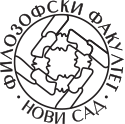A KISVÁROS POÉTIKÁJA 1.
Absztrakt
A tanulmány kétirányú kutatásból indul ki. Egyrészt arra tesz kísérletet, hogy a provinciális kisvárosnak a XIX. század második felében létrejött kronotoposzát megvizsgálja, mindenekelőtt a kor metropoliszmítoszának függvényében írja le: jellemző térábrázolását és időtapasztalatát, az általa közvetítődő életérzést, emberképet. Ennek során a korabeli kisváros-reprezentációkban elsősorban a korabeli világváros „ellenmítoszát” véli felfedezni. Másrészt az így meghatározott kisvárosképnek a XX. század első felében megjelenő magyar változataival foglalkozik az írás. Első részében Kaffka Margit Mária évei és Móricz Zsigmond Az Isten háta mögött című regényében.
Hivatkozások
Benjamin, Walter. 1969. Párizs a XIX. század fővárosa. In Kommentár és prófécia. 228–275. Budapest: Gondolat.
Benjamin, Walter. 1980. A második császárság Párizsa Baudelaire-nél. In Angelus Novus. 850–889. Budapest: Magyar Helikon.
Bodnár György. 2001. Kaffka Margit. Budapest: Balassi.
Csehov, Anton Pavlovics. 1973. Három nővér. Ford. Kosztolányi Dezső. In Sirály: Színművek. [Budapest]: Magyar Helikon.
Eisemann György. 2001. A Móricz-újraolvasás esélyei. In A kifosztott Móricz?, szerk. Fenyő D. György, 240–249. Budapest: Krónika Nova.
Gintli Tibor. 2005. Bovary úr vagy Bovaryné. In Az újraolvasott Móricz, szerk. Onder Csaba, 68–79. Nyíregyháza: NYF BTMFK Irod. Tansz.
Horváth Györgyi. 2009. Kószálónők a régi Budapesten. Nagyvárosi térhasználat és női művészlét – Kaffka Margit: Állomások. In Nő, tükör, írás, szerk. Varga Virág, Zsávolya Zoltán, 162–189. Budapest: Ráció.
Kaffka Margit. 2005. Mária évei. Budapest: Eri Kiadó.
Kosztolányi Dezső. 1978. Színházi esték I. Budapest: Szépirodalmi Kiadó.
Kulcsár Szabó Ernő. 1993. Beszédaktus, szerepkör, irónia. In A magvető nyomában, szerk. Szabó B. István, 24–53. Budapest: Anonymus.
Lotman, Jurij. 1994. Pétervár szimbolikája és a város szemiotikájának problémái. In Kultúra, szöveg, narráció, szerk. Kovács Árpád, V. Gilbert Edit, 186–189. Pécs: Janus Pannonius Egyetemi Kiadó.
Margócsy István. 1993. Sárarany. In A magvető nyomában, szerk. Szabó B. István, 17–23. Budapest: Anonymus.
Mohai V. Lajos. 2010. A Sárszeg regények és környezetük. Szombathely: Savaria University Press.
Móricz Zsigmond. 2005. Úri muri. [Budapest]: Akkord Kiadó.
Móricz Zsigmond. 2012. Az Isten háta mögött. Fapadoskonyv.hu Kft.
Móricz Zsigmond. Kerek Ferkó. http://mek.oszk.hu/05000/05074/05074.htm (2015. máj. 17.)
Szegedy-Maszák Mihály. 2010. Kosztolányi Dezső. Pozsony: Kalligram.
Szilágyi Zsófia. 2013. Móricz Zsigmond. Pozsony: Kalligram.
Szirák Péter. 2001. Az ösztön „nyelve” és a nyelv cselekedtető ereje. In A kifosztott Móricz?, szerk. Fenyő D. György, 226–240. Budapest: Krónika Nova.
Szitár Katalin. 2003. Az elbeszélő gondolkodás és a szó poétikuma: Kaffka Margit: Polixéna tant. In Szó, elbeszélés, metafora, szerk. Horváth Kornélia, Szitár Katalin, 387–409. Budapest: Kijárat.
Uszpenszkij, Borisz. 1984. A kompozíció poétikája. Budapest: Európa Kiadó.








